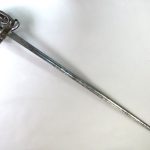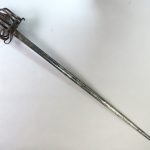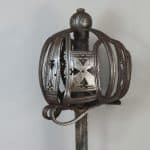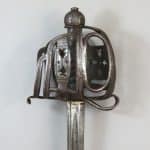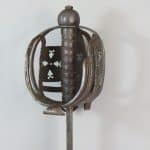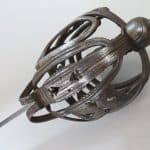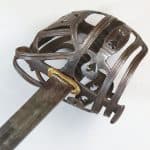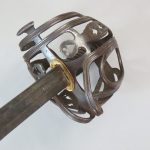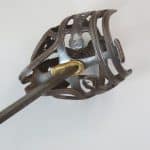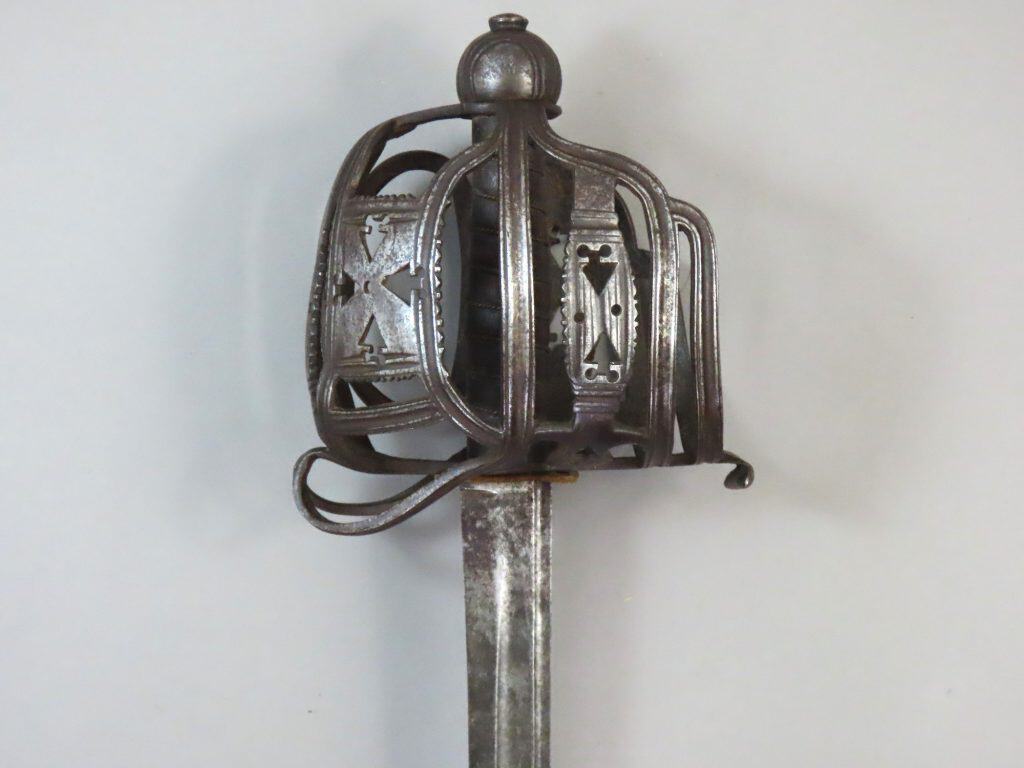
A Scarce Royal Horse Guards Basket Hilted Back Sword circa 1750 to 1780
To enquire about this itemplease click here
Price: £3,900
Ref: 42071891
Item Description
A fine example of a British Horseman’s Basket Hilted Back Sword made for an officer in The Royal Horse Guards as is evidenced by the subjects in surviving contemporary portraits of officers in that regiment. Whilst the hilt type is distinctive in terms of its stylistic features, a further aspect which is not conveyed by the photographs featured below, is its large size.
The hilt type is one of a group of surviving swords with similar distinctive hilts which was once an Ordnance Pattern at the higher end of the quality range for British military swords. Its issue coincided with the outbreak of the Seven Years War in Europe (1756 to 1763). Simultaneously this conflict also spread to North America where it is referred to as the French and Indian War fought there between Britain and France. The sword type would have seen service in both theatres and most likely in the American Revolutionary War (1775 to 1783).
The basket guard is particularly well constructed from thick robust iron bars. The form of hilt decoration is the same style as that developed earlier in the century by the leading Scottish sword makers working in Glasgow such as John Simpson (I) and Thomas Gemmill who were both Kings Armourers. These makers developed the “Glasgow” style of Scottish hilt consisting of bold, flattened, rectangular structural bars, decorated on the outside with long shallow central grooves flanked by narrower incised lines either side. The style of our sword is the same but it was probably made by Harvey in Birmingham having adopted the Glasgow style for this particular pattern of hilt.
The fully formed basket retains its pleasing oval shape and is pierced with triangles and circles in the main front and side guard panels which are also finely fretted at the edges with symmetrical chevrons and merlons. One of the main frontal guard plates in traditional basket hilt design has been replaced with a “horseman’s” oval ring. An additional elaboration by Harvey to the hilt design was to apply an extra transverse bar underneath the main guard plate just above the frontal loop guard.
The arms of the guard are forged onto a circle of iron into which the base of the bun shaped pommel sits. The pronounced button is integral with the pommel and not of separate manufacture. The pommel is decorated with three sets of lines, similar in form to those present on the main bars of the hilt, formed as crescents. The grip is of wood covered leather bound with brass wire with iron ferrules top and bottom.
Unusually this sword retains its full length single edged blade of 39.25 inches (99.5 cm). It has a short ricasso and a deep fuller running underneath the blunt back edge on each side for 22.5 inches (57 cm) after which the blade is double edged. A shallower broader fuller commences an inch or so from the hilt, runs along the middle of the blade, and tapers in proportion with the overall taper of the blade to the tip.
The sword is in good condition overall with some blackened patination and age related staining. The parts of the hilt are tight together.
See Robert Brooker, “British Military Pistols and Associated Edged Weapons”, Colorcraft Ltd, 2016 page 96, Figure 67 for a very similar example.
Also see Richard Bezdek, “Swords and Sword Makers of England and Scotland”, Paladin Press, 2003, page 285 for another similar sword.
